Propane Hydrocarbon Refrigerant Safety Guide
Posted by McCombs on 18th Jun 2024
Everything You Need to Know About Hydrocarbon Refrigerants
If you're searching for a new large appliance for your home, you've likely come across the term "spark-free." This is something crucial to keep an eye out for, as it means the interior of the appliance has no chance of igniting flammable liquids. Fans, lights, and electric thermostats can ignite. Manufacturers remove these items to keep the appliance spark-free. <<edit, I don’t believe the manufactures remove fans, lights and electric thermostats, what I beleive is that they keep them in the appliance but they seal the switches and electronic contacts to prevent sparks.
And can you incorporate something about McCombs Carrying Spark Proof Icemakers and link it up to this: https://mccombssupply.com/choice-manufactured-w11517113-ice-maker-for-whirlpool-r600a-refrigerators-spark-proof/
This is something about our spark proof Icemakers, can this be incorporated into this blog?
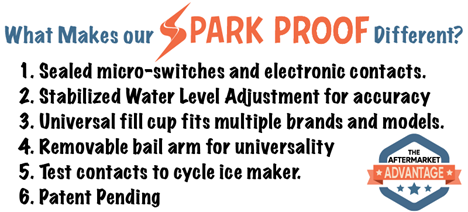
These spark-free appliances maintain a constant temperature due to their built-in defrost cycle. You should consider a spark-free fridge if you’re storing reagents and/or solvents that could ignite.
As a spark-free appliance won't ignite flammable liquids, you'll be able to use hydrocarbon refrigerants. Hydrocarbon refrigerants are non-toxic and cost-effective, which has led to their growing popularity.
In this article, we'll tell you everything you need to know about hydrocarbon refrigerants. We'll share the most common types, the benefits of each, and how to safely handle these kinds of refrigerants. You'll walk away with a better understanding of how the large appliances in your home and workplace operate.
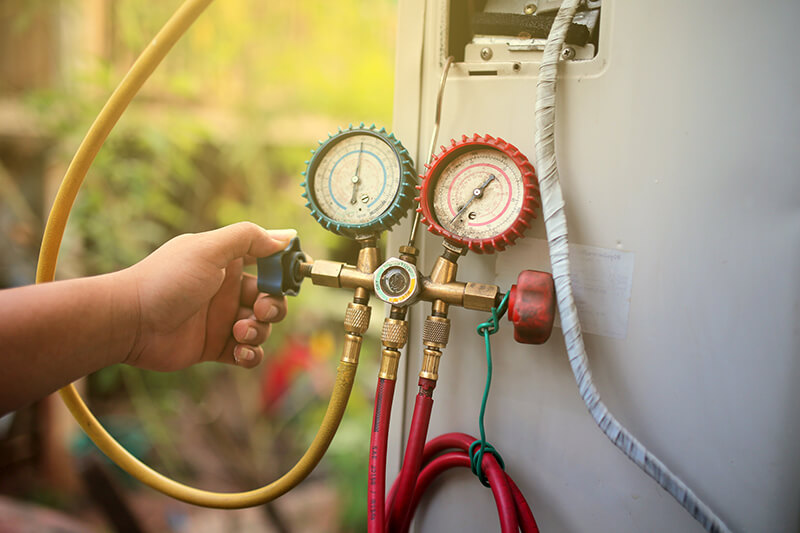
What is a Refrigerant & How Do They Work?
A refrigerant is an essential component for refrigerators, freezers, and air conditioners. It is a cooling agent that absorbs heat and leaves cool air behind when it passes through a compressor and evaporator. A refrigerant fluctuates between a liquid gas state as it goes through the thermodynamic process.
Here's a breakdown of how a refrigerant cools down the inside of an appliance:
- “It begins as a liquid when it passes through the expansion device in the unit. Then, the refrigerant expands and cools due to the sudden drop in pressure. That causes it to turn into a gas.
- As the gaseous refrigerant passes through the copper evaporator coil inside the appliance, it will absorb the heat from the products inside.
- The unit’s compressor then pulls the refrigerant gas and the absorbed heat away from the food products, increasing the pressure of the gas.
- The hot, high-pressure refrigerant then passes through the condenser coils. As that happens, it radiates its heat into the atmosphere and cools back into a liquid.
- The liquid refrigerant reenters the expansion device and the process begins again.”
Source: Webrestaurantstore.com
Different Types of Refrigerants
There are dozens of commonly used refrigerants. Halocarbons were the most popular refrigerants for years. They are manufactured chemicals used in air conditioning, chilled water, and refrigerators. Here are some you may come across:
- “R12 (Dichlorodifluoromethane) — Commonly used for automobile and refrigerator air conditioning, and industrial chillers.
- R11 (Trichlorotrifluoromethane) — You'll find this in commercial equipment, solvent, and foam blowing.
- R113 (Trichlorotrifluoroethane) — Often found in cooling systems, foam-blowing agents, and used as a cleanser for electrical equipment.
- R114 (Dichlorotetrafluoroethane) — This is often used as a chiller for air conditioning or industrial process cooling.
- R500 (Dichlorodifluoromethane and Difluoroethane) — Commonly used for heating, chilling, air conditioning, ventilation applications, and dehumidifiers.”
Source: Refrigerantfinders.com
While these refrigerants have been used for a long time, experts have realized the environmental implications of using them. This has given way to the rise of hydrocarbon refrigerants.
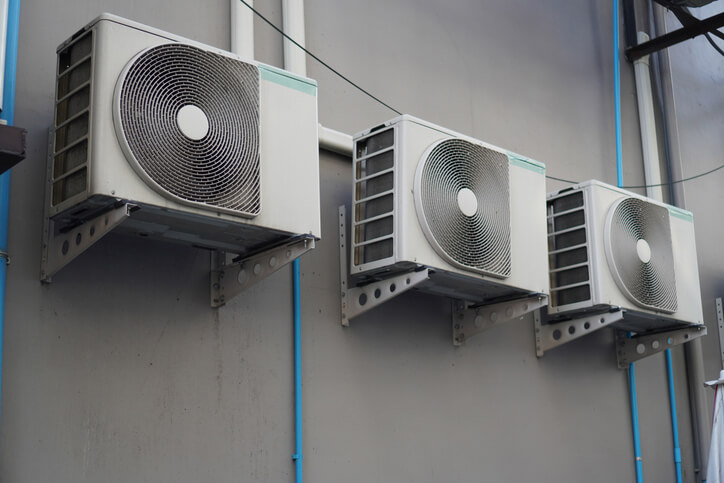
What is a Hydrocarbon Refrigerant?
Traditional refrigerants have caused so much damage to the ozone that the 1989 Montreal Protocol on Substances that Deplete the Ozone Layer ordered participating countries to begin phasing them out. Hydrocarbon refrigerants came up as the winner for a natural alternative.
They're able to provide a cooling effect without depleting the ozone or contributing to global warming. They have a few other benefits as well:
- Hydrocarbons from soil and oil, so their price is lower than that of other synthetic refrigerants.
- Their global-warming potential clocks in at a 3, which is much lower than other synthetic refrigerants.
- They cool and heat more efficiently than other refrigerants.
- Hydrocarbons have quicker temperature recovery and lower energy consumption.
- They holdover at frozen temperature during power outages up to 36 hours.
There's a widespread push for businesses and consumers alike to go green, and using hydrocarbon refrigerants are a great way to do that. R-290 and R-600a are two refrigerants that are becoming more widely used as hydrocarbon options are becoming more popular.
R-290 Refrigerant
R290 Propane says, "R290 is a High Purity Propane (C3H8) used in refrigeration that has become increasingly popular due to the reduced ozone depletion and global warming potential and improved thermodynamic properties over traditional refrigerant products." It's an un-odorized, low moisture, non-toxic option that is compliant with refrigeration requirements.
It's a refined propane that is used as an alternative to R134a and R404A. Its capacity to absorb heat is 90% higher, resulting in quick energy recovery and low energy consumption.
It's a highly-versatile refrigerant. A small amount can charge an average upright refrigerator. But at the same time, they can power commercial refrigeration systems in restaurants or even food trucks. Using R-290 in conjunction with more energy-efficient compressors, condensers and evaporators can result in more energy-efficient homes and businesses.
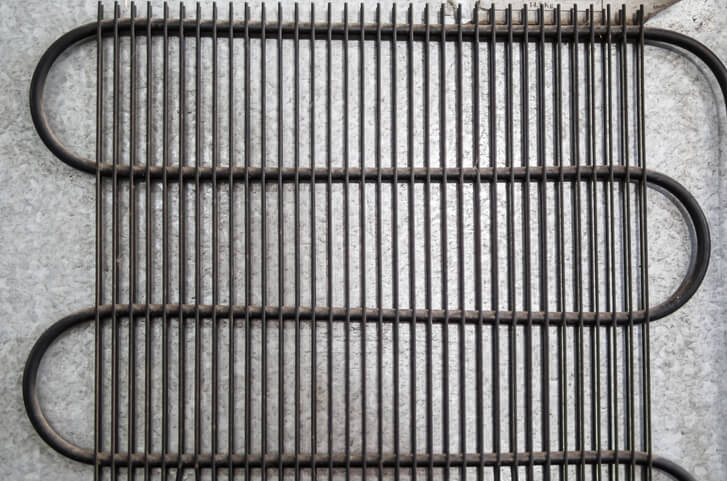
R-600a Refrigerant
R-600a is an isobutane-grade natural refrigerant that is an ideal replacement for hydrofluorocarbon, chlorofluorocarbon, R12, and R22. Since it's an isomeric unbranched butane, it is a great cooling agent. Thanks to its eco-friendly properties, businesses use it forindustrial and commercial purposes. Here are some common use cases:
- Refrigerators and freezers
- Dehumidifiers
- In beverage dispensers
- In aerosol sprays
- It can be used for geothermal power generation
- It is also used in plug-ins as well as vending machines
- It's suitable in the petrochemical industry as feedstock
- It can also be used as a propellant and packaging gas in the food industry
Important Facts About R-290 and R-600a
Before handling any new refrigerant, you should have a solid baseline knowledge of the substance you're working with. The more informed you are, your appliance will run smoother and you'll be safer. Here's what you should know about R-290 and R-600a.
R-290 Facts
While R-290 is non-toxic and environmentally-friendly, you still need to handle it with care. Make sure to store it in an upright position and only use it in accordance with the manufacturer's instructions. Make sure to store it in an upright position and only use it in accordance with the manufacturer's instructions. Here are some other facts and considerations to know about using R-290:
- You or your business does not need to be EPA-certified to purchase this refrigerant.
- You don't have to be certified to service, repair, or maintain an approved hydrocarbon containing system to use R-290.
- You need specialized, spark-resistant tools to service an R-290 refrigeration system. Here are some you'll need:
- A combustible gas meter
- An R-290 electronic leak detector
- A safety placard advising of no smoking or open flames
- Standard refrigeration tools such as a pinch off tool, nitrogen, vacuum pump, micron gauge, torches, soap bubbles, manifold set, and a tube cutter
- You can leak check an R-290 system using a bubble solution or ultrasonic leak detector.
- Stand-alone retail food equipment uses R-290 refrigerants. It's important to note that the EPA has limits on the charge size for this application. The maximum is set at 150 grams. You may not refit the appliance to work with a refrigerant either.
- The same rules apply for vending machines.
- You can leak check an R-290 system using a bubble solution or ultrasonic leak detector.
- Refrigerant grade propane does not contain any odorant, as it's considered to be a contaminant.
R-290 training courses are available. They're commonly offered online, but you can likely find one offered on-site at an area near you. These courses will teach topics such as regulations, safety precautions, how to store and transport R-290, leak checking, system evacuation, and sparking hazards.
R-600a Facts
Similar to R-290, R-600a is a hydrocarbon refrigerant that is actively used and is expected to grow in popularity. This refrigerant comes from butane, created by the isomerization of butane. It is used for blending in a variety of other refrigerant mixes found in HCFC, HFC, and Hydrocarbon classifications.
It is also highly flammable and possesses very little global warming risk. It can be used in home refrigerators and freezers, commercial vending machines and plug-ins, and for industrial refrigeration.
Here are a few other facts to consider before using R-600a:
- There are no venting regulations to follow when dealing with R-600a.
- R-600a is an efficient refrigerant with low discharge temperatures.
- It operates at a low pressure level when compared to other refrigerants.
- R-600a requires a smaller charge to complete the same job as other refrigerants.
- Isobutane is relatively low cost when compared to the synthetic refrigerants commonly used.
- R-600a is rated as a "3" by the American Society of Heating, Refrigerating and Air-Conditioning Engineers (ASHRAE), meaning it falls on the higher flammability rating.
- Due to this higher flammability risk, the amount of charges allowed by governments is quite limited.
- R-600a is not suitable for use in retrofitting existing fluorocarbon based systems such as R-22, R-134a, or R-404A.
- This refrigerant is often the best choice when it comes to medium, high, and very high temperature applications.
- It is illegal to convert or retrofit existing systems over to using isobutane unless it is explicitly stated in the EPA’s SNAP Program.
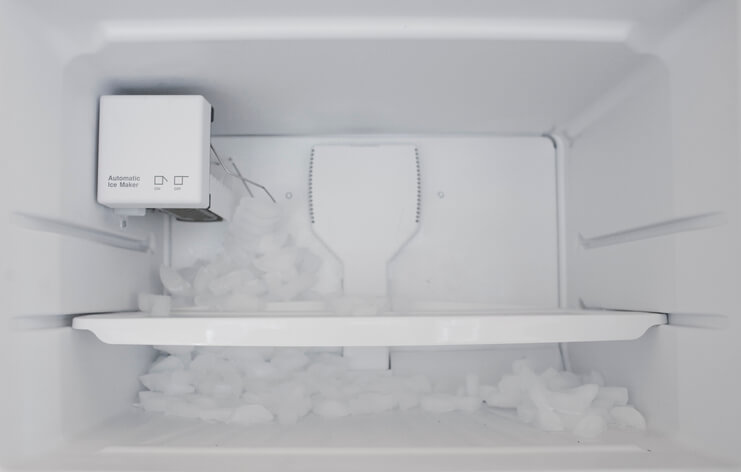
Important Refrigerant Safety Tips
No matter which type you plan to use, you should practice thorough safety precautions when handling any kind of refrigerant. Even mishandling environmentally, non-toxic hydrocarbon refrigerants can cause injury or health hazards. Here are some tips to follow:
- Educate yourself about the refrigerant you're using. Look over the material safety data sheet that came with your refrigerant. If you're working with a hydrocarbon refrigerant, it's especially important to understand how flammable they are.
- Learn your state's standards and procedures for using hydrocarbon refrigerants. These may vary from state-to-state, so make sure you're in accordance with local codes and laws.
- Be prepared for a leak or spill. If the gas from your refrigerant spills or leaks, there is potential for a fire or explosion. Read up on what to do in these situations before handling hydrocarbon refrigerants and always keep a spill kit handy. These include absorbent materials, neutralizing agents, gloves, and other equipment to contain spills.
- Properly dispose of your refrigerants. Reach out to the appropriate authorities to ensure compliance and environmentally friendly disposal methods if needed.
- Always wear appropriate personal protective equipment when handling refrigerants. This will help you to avoid potential harm. It will act as a barrier and protects against direct contact, inhalation, or accidental splashes.
- Consider training and certifications. If you'll ever be handling refrigerants by yourself, you can never be too safe. Look into online courses. After you complete certifications, continue to read up on the latest safety regulations so you're always up-to-date.
-
TL;DR — The More You Know About Your Refrigerants, the Better Your Appliances Will Operate
Refrigerants are the key to keeping fridges, freezers, and AC units cool. But they have changed a lot over the years. The industry standard has pretty much moved from halocarbons to hydrocarbons like R-290 and R-600a. These hydrocarbon options are better for the environment, cost less, and are more efficient than halocarbons.
While these are great alternative options, hydrocarbon refrigerants have a downside: they're highly flammable. Read up on how to safely handle R-290 and R-600a on your own and learn what to do in the event of a spill or leak. With proper training and education, your refrigerant of choice will cool your device with ease.
At McCombs Supply, we have everything you need to keep those refrigerants operating in great shape. We offer Yellow Jacket products such as leak monitors, leak detectors, refrigerant recovery systems, and charging systems.
Our team offers anything you need to keep your large appliances running smoothly. We have replacement repair parts for everyday appliances. That includes:
- Dishwashers
- Dryers
- Microwaves
- Range-ovens
- Refrigerators
- Washing machines
- HVAC
- Commercial refrigeration
- Commercial cooking
We work with supply contractors, service technicians, housing developments, institutions, and DIYers. Whatever your level of expertise is, our team can help you out.
Whatever you need for a refrigerant, spark-appliance, or more, we have you covered. Reach out to us today for any questions on our products, shipping, or prices.
